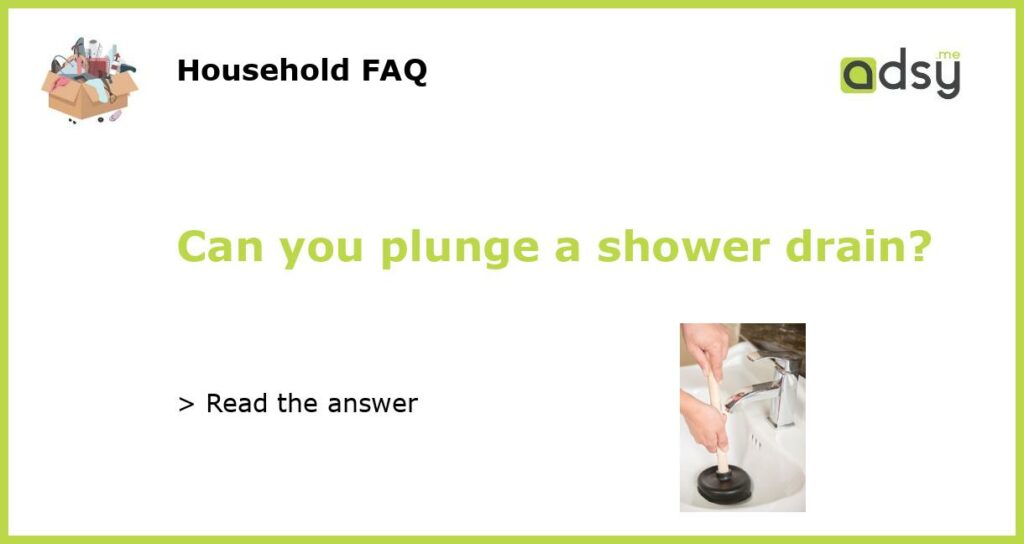Yes, you can plunge a shower drain
If you have ever experienced a clogged shower drain, you know how frustrating it can be. The water starts to pool up, and you are left with a mess. In these situations, many people wonder if they can use a plunger to clear the blockage. The good news is that plunging a shower drain can be a quick and effective solution.
How to plunge a shower drain
Plunging a shower drain is a relatively simple process that can help to remove the clog and get your water flowing freely again. Here is a step-by-step guide on how to do it:
1. Remove the drain cover: Before you can start plunging, you need to remove the drain cover. This can usually be done by using a screwdriver to pry it off.
2. Prepare the area: To prevent any mess, place old towels or a bucket around the drain to catch any water that may splash out during the plunging process.
3. Create a seal: Place the plunger over the drain and ensure that it forms a tight seal. You want to cover the entire drain opening to create the necessary suction.
4. Plunge: Begin plunging by pushing down on the plunger firmly and quickly. Use sharp and forceful plunges rather than slow and gentle ones. The goal is to create a strong suction that dislodges the clog.
5. Repeat if necessary: If the clog doesn’t clear after a few plunges, remove the plunger and check for any signs of debris that may have been dislodged. If you see any, try plunging again. If the clog still persists, you may need to try other methods such as using a drain snake or calling a professional plumber.
When can plunging a shower drain not work?
While plunging can be an effective method for clearing many shower drain clogs, there are some instances where it may not work. Here are a few situations where plunging may not be successful:
1. Severe blockage: If the clog is severe and extends further down the pipes, plunging may not be enough to clear it. In these cases, professional help may be required to assess and resolve the issue.
2. Physical obstruction: If the clog is caused by a physical object, such as a toy or jewelry, plunging may not be effective in dislodging it. In these cases, a drain snake or other specialized tools may be necessary.
3. Old corroded pipes: If your shower pipes are old and corroded, they may have sharp edges or weak spots. Plunging vigorously in these cases could potentially cause more damage to the pipes.
Tips for preventing shower drain clogs
While plunging can be a quick fix for a clogged shower drain, it is always better to prevent clogs from happening in the first place. Here are some tips to keep your shower drain flowing freely:
1. Use a drain cover: Installing a drain cover can help to catch hair and other debris that could potentially cause a clog. Regularly clean the drain cover to prevent buildup.
2. Remove hair after every shower: After each shower, take a moment to remove any hair that has collected around the drain. This simple step can go a long way in preventing clogs.
3. Avoid pouring greasy substances down the drain: Grease and oils can solidify and create blockages in your pipes. Dispose of these substances properly instead of pouring them down the drain.
4. Use a drain cleaner: Regularly using a drain cleaner can help to prevent the buildup of soap scum, hair, and other materials that can cause clogs. However, be cautious when using drain cleaners as they can be harsh and may damage your pipes if not used correctly.
5. Consider professional plumbing maintenance: A professional plumber can assess your plumbing system and perform regular maintenance to prevent clogs and identify any potential issues before they become major problems.






